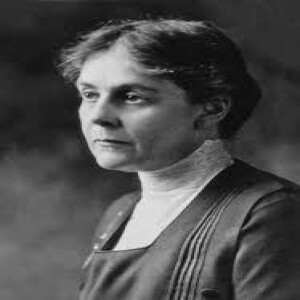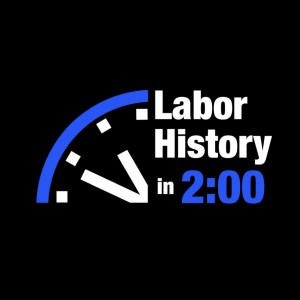
- Podcast Features
-
Monetization
-
Ads Marketplace
Join Ads Marketplace to earn through podcast sponsorships.
-
PodAds
Manage your ads with dynamic ad insertion capability.
-
Apple Podcasts Subscriptions Integration
Monetize with Apple Podcasts Subscriptions via Podbean.
-
Live Streaming
Earn rewards and recurring income from Fan Club membership.
-
Ads Marketplace
- Podbean App
-
Help and Support
-
Help Center
Get the answers and support you need.
-
Podbean Academy
Resources and guides to launch, grow, and monetize podcast.
-
Podbean Blog
Stay updated with the latest podcasting tips and trends.
-
What’s New
Check out our newest and recently released features!
-
Podcasting Smarter
Podcast interviews, best practices, and helpful tips.
-
Help Center
-
Popular Topics
-
How to Start a Podcast
The step-by-step guide to start your own podcast.
-
How to Start a Live Podcast
Create the best live podcast and engage your audience.
-
How to Monetize a Podcast
Tips on making the decision to monetize your podcast.
-
How to Promote Your Podcast
The best ways to get more eyes and ears on your podcast.
-
Podcast Advertising 101
Everything you need to know about podcast advertising.
-
Mobile Podcast Recording Guide
The ultimate guide to recording a podcast on your phone.
-
How to Use Group Recording
Steps to set up and use group recording in the Podbean app.
-
How to Start a Podcast
-
Podcasting
- Podcast Features
-
Monetization
-
Ads Marketplace
Join Ads Marketplace to earn through podcast sponsorships.
-
PodAds
Manage your ads with dynamic ad insertion capability.
-
Apple Podcasts Subscriptions Integration
Monetize with Apple Podcasts Subscriptions via Podbean.
-
Live Streaming
Earn rewards and recurring income from Fan Club membership.
-
Ads Marketplace
- Podbean App
- Advertisers
- Enterprise
- Pricing
-
Resources
-
Help and Support
-
Help Center
Get the answers and support you need.
-
Podbean Academy
Resources and guides to launch, grow, and monetize podcast.
-
Podbean Blog
Stay updated with the latest podcasting tips and trends.
-
What’s New
Check out our newest and recently released features!
-
Podcasting Smarter
Podcast interviews, best practices, and helpful tips.
-
Help Center
-
Popular Topics
-
How to Start a Podcast
The step-by-step guide to start your own podcast.
-
How to Start a Live Podcast
Create the best live podcast and engage your audience.
-
How to Monetize a Podcast
Tips on making the decision to monetize your podcast.
-
How to Promote Your Podcast
The best ways to get more eyes and ears on your podcast.
-
Podcast Advertising 101
Everything you need to know about podcast advertising.
-
Mobile Podcast Recording Guide
The ultimate guide to recording a podcast on your phone.
-
How to Use Group Recording
Steps to set up and use group recording in the Podbean app.
-
How to Start a Podcast
-
Help and Support
- Discover

On this day in labor history, the year was 1978.
That was the day OSHA published its lead standard.
The standard reduced permissible exposure by 75% to protect nearly a million workers from damage to nervous, urinary and reproductive systems.
As early as 1908, Alice Hamilton, the mother of occupational medicine, noted that lead had endangered workers as far back as “the first half-century after Christ.”
In their book, Deceit and Denial: The Deadly Politics of Industrial Pollution, historians Gerald Markowitz and David Rosner add that “throughout her distinguished career, Hamilton was deeply involved in uncovering the relationship between lead and disease in the American workforce.”
Hamilton’s groundbreaking research on the effects of lead paved the way for a growing uproar against its continued use.
After the Occupational Safety and Health Act passed in 1970, occupational and public health activists pushed hard for a lead standard.
A new generation of industrial hygienists emphasized how unsound, industry-driven conclusions regarding “safe lead levels” impacted women workers and workers of color.
Industry had long asserted that women and African-Americans were simply more susceptible to lead poison, which served to justify discrimination in hiring.
Some unions accepted these terms, if only to demand a stringent lead standard that included immediate implementation of engineering controls.
But leading hygienists like Jeanne Stellman blasted these arguments.
Stellman insisted such conclusions reflected racial and gender bias rather than any credible scientific evidence.
She added that men, women and children, regardless of race or ethnicity, were all adversely affected by lead exposure.
The final standard adopted was considered a compromise.
Discrimination in hiring has continued and enforcement proves difficult.
But even a watered-down standard was too much for the lead industry.
They have been fighting it ever since.
More Episodes
 2025-05-02
2025-05-02
 2025-05-01
2025-05-01
 2025-04-29
2025-04-29
 2025-04-28
2025-04-28
 2025-04-27
2025-04-27
 2025-04-25
2025-04-25
 2025-04-24
2025-04-24
 2025-04-23
2025-04-23
 2025-04-22
2025-04-22
 2025-04-21
2025-04-21
 2025-04-20
2025-04-20
 2025-04-19
2025-04-19
 2025-04-17
2025-04-17
 2025-04-16
2025-04-16
 2025-04-14
2025-04-14
 2025-04-13
2025-04-13
Create your
podcast in
minutes
- Full-featured podcast site
- Unlimited storage and bandwidth
- Comprehensive podcast stats
- Distribute to Apple Podcasts, Spotify, and more
- Make money with your podcast
It is Free
- Privacy Policy
- Cookie Policy
- Terms of Use
- Consent Preferences
- Copyright © 2015-2025 Podbean.com


